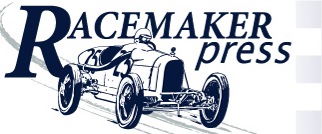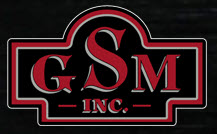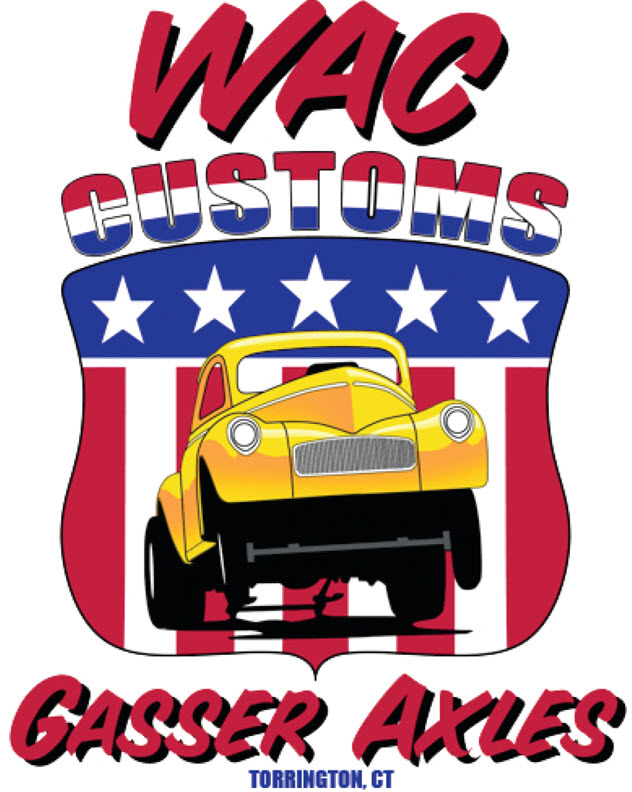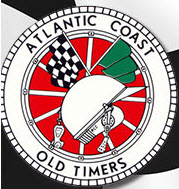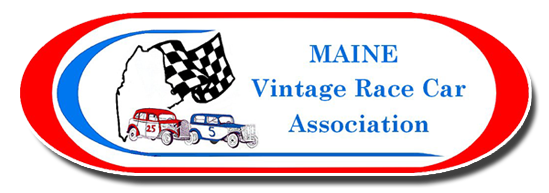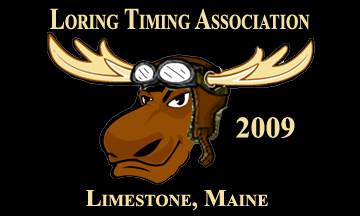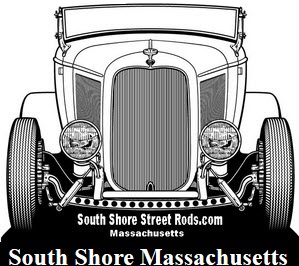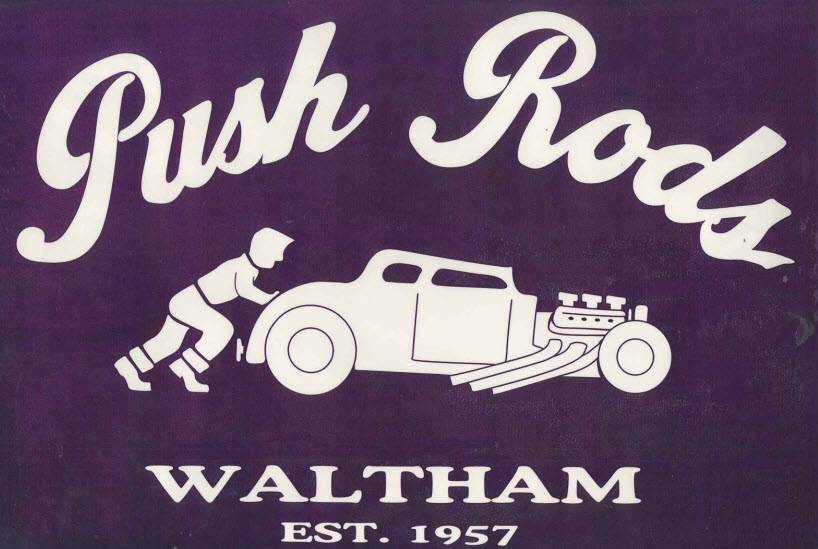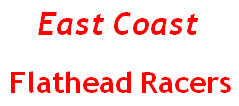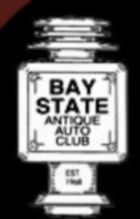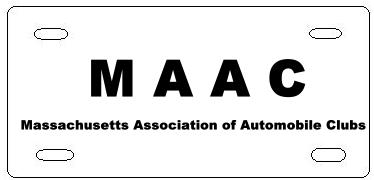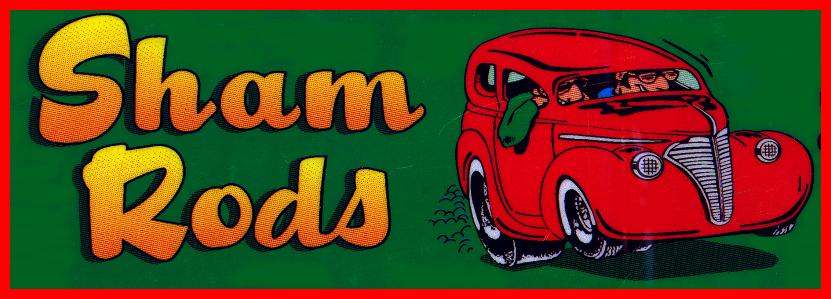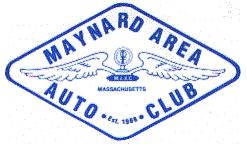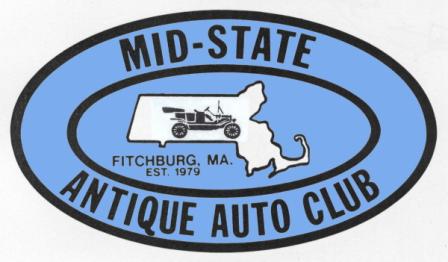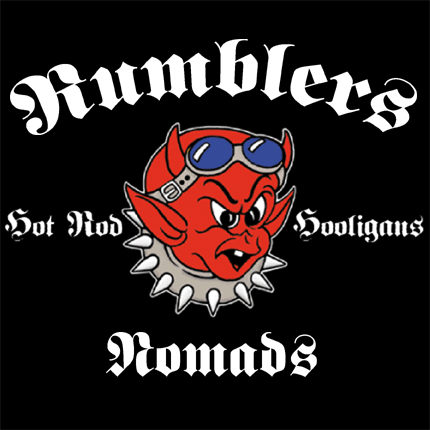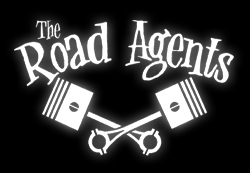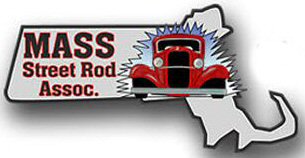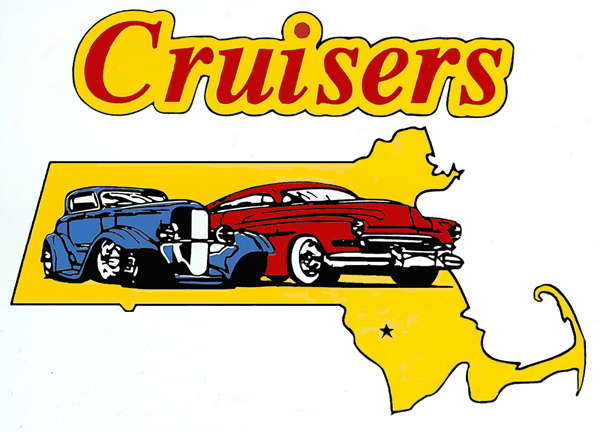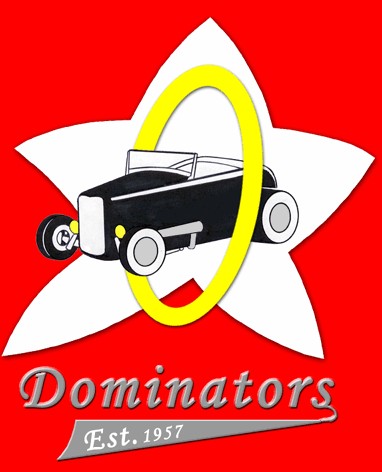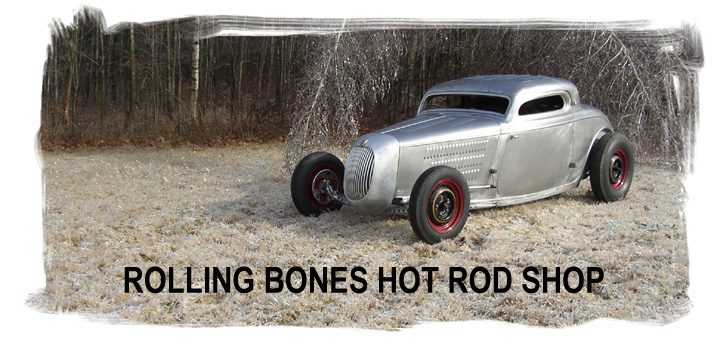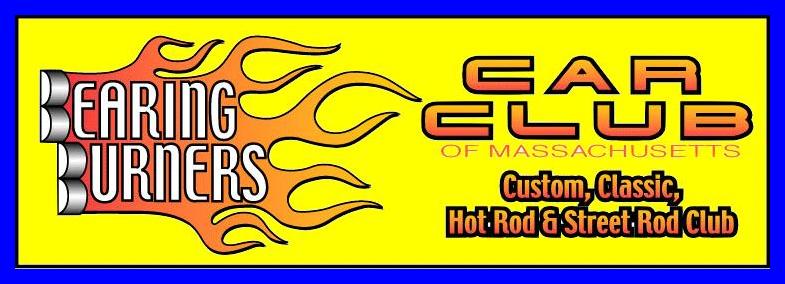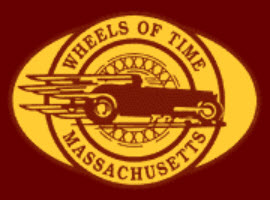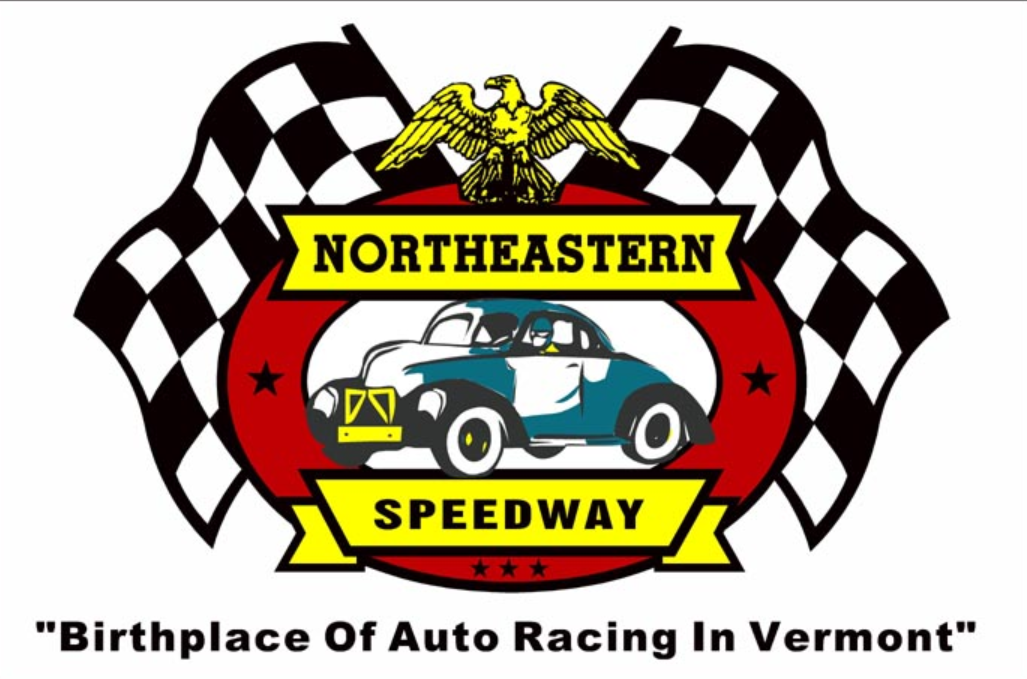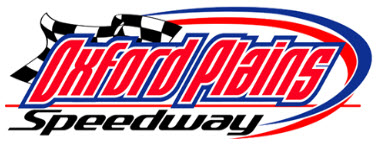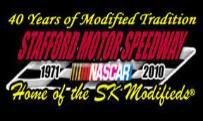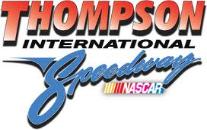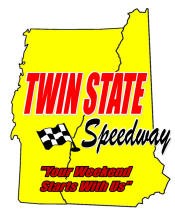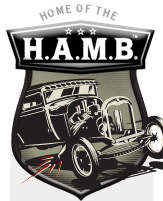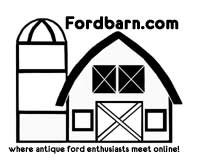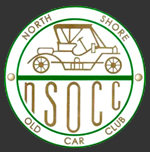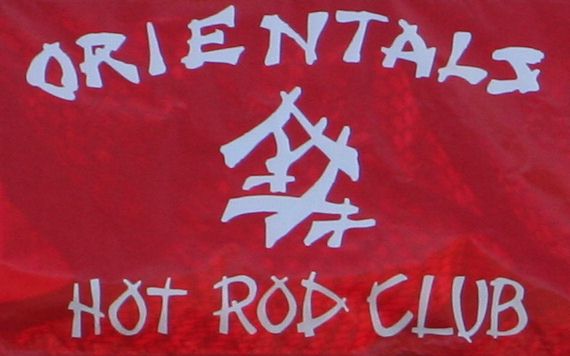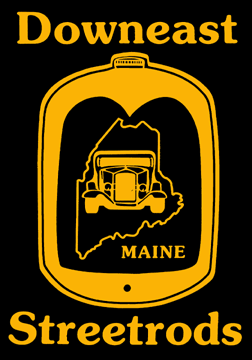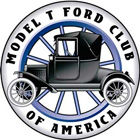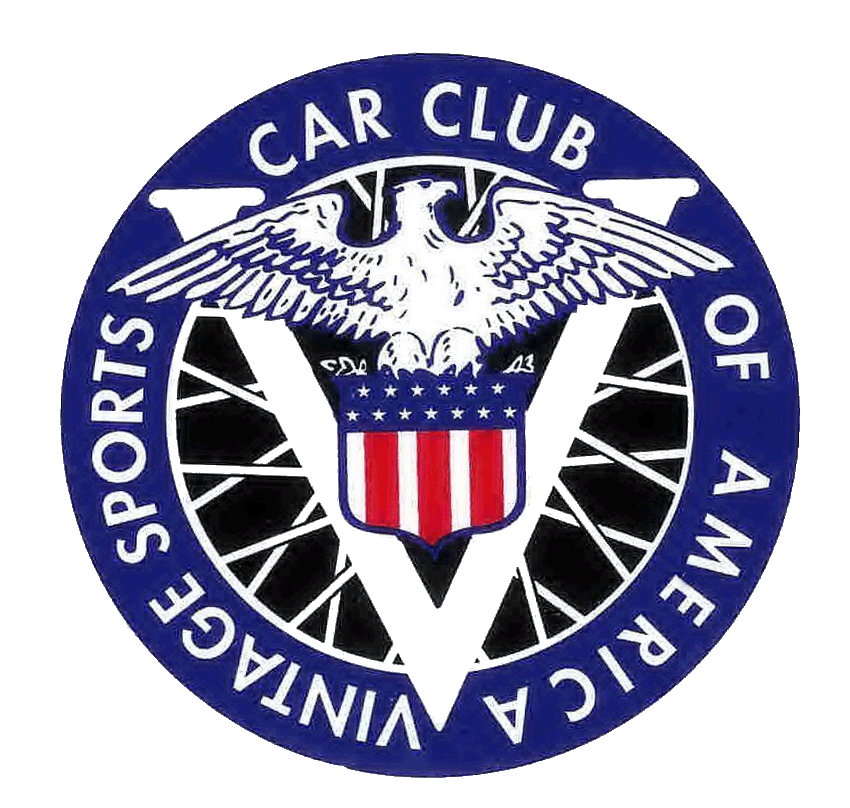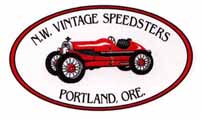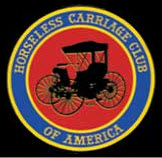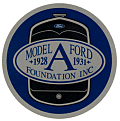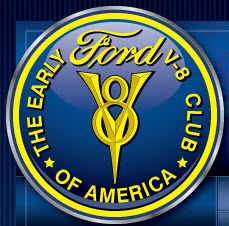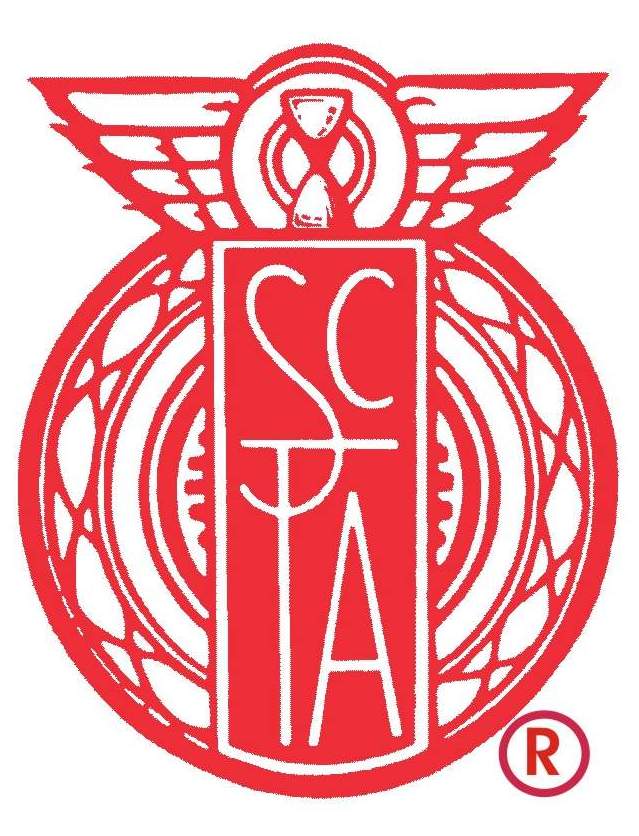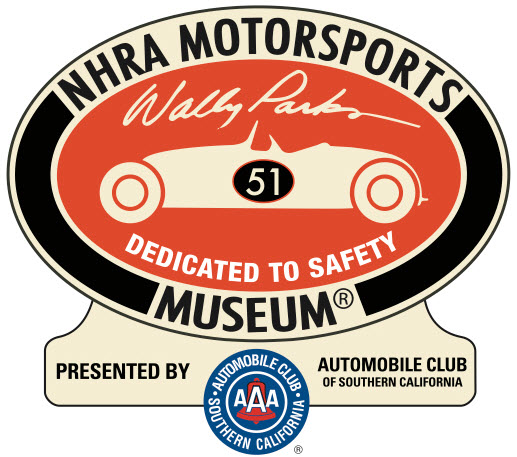From H4H4 (HOT FOR HOT FOURS) #3-0 with Permission of Author
Following are some options that will give more power, better fuel mileage and still not hurt bearing life. I am assuming a couple of things, 1) We are building a Model A engine (as opposed to a B engine) and 2) that we want it to idle nicely and have good “driveability”. These are big assumptions as it is kind of like asking how fast is fast? Keep in mind that if you ask 10 Model A ‘experts’ you will most likely get 12 different answers, most will be good, so you just take it all in and decide for yourself what is best for you.
Block: The early 1928 blocks were not as strong in the rear main bearing web area as the later blocks. The earliest ones had no reinforcement ribs and used thinner bearing caps. Later versions of the 5-cam bearing block were reinforced with 2 ribs, at some time later Ford dropped the 5-cam bearing block and added a third reinforcement rib. The latest of the A blocks had thicker material in several areas. The later the block, the better, as far as strength goes.
Crankshaft and rods: The crankshafts in the Model A are dimensionally all the same but the early cranks were shaped differently between the rod bearing throws, some people refer to these as “beaver-tail” cranks. These early cranks were slightly lighter so could result in quicker acceleration but there is no actual horsepower advantage or disadvantage. A few early engines had X shaped rods. I know little about these rods, they may be lighter but I do not recommend using them as they are an unknown entity to me. If using original rods be sure that the bolt areas are in good shape, not stretched or thin threads. Also try and find rods that have not been filed or hack-sawed to mark them for the cylinder that they belong in, this can weaken them.
Pistons: Any new piston made for the Model A will work very satisfactorily and have long life. If you can get pistons with narrower than stock rings, the ring life will be longer and have better sealing so less blow-by. Forged pistons are not needed in a touring engine, or even in a hot street engine. I have run cast aluminum pistons in an engine that I ran in a dragster and turned that engine 6,000 RPM on a regular basis. I also ran those same pistons at Bonneville and had no problem with them. Cast pistons actually have some advantages over forged for street engines. Allow adequate piston-to-wall clearance. Ford said use a maximum of .002” clearance. This is not adequate for today’s pistons and is even worse if you drive a lot and use an overdrive. I recommend a minimum of .003”, I usually set my street engines at .004”. Too tight in this area will result in scored pistons and cylinder walls.
Bearing life: The most important thing is to use good quality, high-speed babbitt and have it done by someone with a good reputation. Secondly use modern oils and a full-flow filter. Use a crank that is as near standard as you can find and have it counter weighted. Counter weighting won’t add horsepower nor necessarily make the engine feel any smoother but it will help bearing life. Have the entire engine balanced. It is best to not use a crank that is more than .030" undersize but I have seen Model A cranks that are as much as .060" undersize. I recommend a 3/16” line directly from the oil pump to the center main bearing cap, the center main takes the most beating and extra oil will help. Remove weight from the flywheel. This will not only help bearing life but will make your gear-shifts faster (as higher compression will also). Converting the engine to full pressure oiling is not necessary unless you are going to race it or use very high compression or turn the engine high RPM, 4000 or better. Stock oiling has some advantages over a pressure system for guys that don’t drive their A’s every day, the main one being that no matter how long it has been since last run, the rods, cam, etc. will have oil to them at the first revolution (because oil is always ready in the dipper tray) without having to wait for oil to be pumped thru all the lines, crank, etc. to get to the rods. Check the dipper tray for rust-out by cleaning it thoroughly and holding up to sunlight, if porous you will see pinholes which need welding or brazing. Insert bearings are a good way to go but certainly not a necessity.
First start-up: When you are ready to start the engine for the first time after the rebuild, do two things immediately before starting the engine. 1) Pour 4 quarts of oil in the pan via the oil filler tube. This fills the dipper tray that oils the rods. 2) With water in the engine and everything ready to go, remove the distributor and its drive shaft, then pour one quart of oil down the distributor hole, this will fill the valve chamber with oil and start oiling the main bearings. It just takes a minute or two to re-install the dist. which gives the oil time to get to the mains. Do not use non-detergent oil.
The above pertains to the Model A block. The Model B block has a better oiling system with pressure to the mains and bigger main & rod bearings. The bigger bearings also make for a more rigid crank. The downside to Model B blocks is that they are thinner on the top deck and therefore are more apt to crack, they are also much more expensive to buy if you can find one.
I recommend all the standard rebuild items now in common use, i.e. one-piece valve guides, hard exhaust seats (no harm in putting them in the intakes too but not as important), GM valves etc. I always use an aluminum timing gear for longevity.
Now the fun part, or hard part, depending on how you look at it. Higher compression and a bigger carburetor are the two easiest and most important paths to more power and speed.
Cylinder head: Use 6:1 compression ratio or higher, 7 is not too high but would not go higher than 7:1. If you want to stay with the stock look, the Snyder (my preference) or Brumfield heads work very well. If you want to go higher I would recommend someone else’s head at around 7:1. I don’t think the Snyder or Brumfield combustion chamber design is good enough for more than 6:1, they even used to advertise that you shouldn’t go over 6:1. Specialty Ford Parts / 9109 Garvey Ave. / Rosemead, CA 91770 / 626-288-2121 makes Winfield heads that, in my opinion, have the best combustion chamber.
Carb & Manifold: At the very least use a Model B carb and manifold. I think the ideal carb is a Winfield Model S but they are hard to find. The next option is a Stromberg ‘97' or other, more modern, downdraft carb such as the Weber 32/36. You might get by without a fuel pump on some downdrafts, I ran a’ 97' on my ‘30 Tudor with no problems. ‘28 & ‘29 Model A’s have a lower gas tank and it gets a little iffy. I recommend a single carb rather than two because of the simplicity. (OHV heads will probably require a fuel pump as the carb sits higher.) If using a Stromberg carb with an electric fuel pump a regulator will be needed, regulate to no more than 3 PSI.
Cam: Of course a Brierley cam is the best choice that you can make! For most mild performance engines I recommend a Model B cam or a B grind on a Model A cam. There are a lot of other options but everything is a compromise and the B grind works well all around, you still get the smooth idle and low-end torque with good mid-range power. If you go to a larger carb than the B you can utilize a slightly hotter cam such as my “C” grind or Winfield IR. If you don’t have a local source for cam grinding I can regrind your cam.
Valves: Some engine builders use larger intake valves but unless you go to a hot cam and a large or dual carbs, there is little advantage to this and it is a lot of trouble. The exhaust valves and ports are very adequate in size and shape but I recommend one-piece guides and good valves such as the exhaust valve from an early 60’s GMC 305 V6 engine. These valves can be used as both intake and exhausts. If you decide to go to larger intake valves the easiest valve to install is the 216 Chevy intake valve. It has a 1&11/16” head diameter and a 30 degree seat angle. The 30 degree angle allows for better flow towards the piston. The valve guides from the 215 Buick V8 (Egge part # G-880) will press right in the A block with no modification needed although I shorten them to stock A length for easier valve spring installation. These are 11/32” I.D. and fit both of the above valves. Stock valve springs work well but should be installed with a shim for more seat pressure, this insures good valve cooling and is necessary for a performance cam so the valve follows the cam at higher RPM’s. I recommend seat pressure of 40 PSI on a B grind cam and 60 on a performance cam. Keep in mind that when you change to one-piece guides you have lessened the installed height as the stock guides have a shoulder on them that the spring sits on, so a spacer is necessary.
Ports: Both the intake and the exhaust ports should be ground smooth with a die-grinder. The intakes can be enlarged slightly at the valve for increased flow. Do not polish the intake ports, this will cause fuel to separate from the air/fuel mixture on the way into the cylinder. The exhaust ports can be smoothed and polished. Match the port to the hard valve seats. The intake seats should be narrower than the exhausts, the exhausts need some width for cooling, narrow seats seal better on the intakes. The intake valve should seat near its outer diameter, the exhaust in the center of the seat area.
Exhaust: The Model A exhaust manifold is quite good, Aries makes a high-flow stock-looking muffler that works great. Headers are even better but are not permitted in our hill climb stock or touring classes.
Ignition: Probably most break-downs and poor performance in Model A’s are caused by the ignition system. I highly recommend a good electronic ignition, either a conversion such as the FS ignition or a good aftermarket distributor such as a Mallory. Do not use too much spark advance. Most flathead engines can use only about 26 to 28 degrees total advance. Detonation will ruin bearings quicker than anything. That is what I don’t like about the Brumfield high compression head, the chamber is not suited for high compression.
Cooling: The Model A radiator will usually be more than adequate to cool your engine, if in good condition. Do not scrimp in this area, spend a few bucks and have your radiator cleaned by a professional shop. The Model A water pump will also work well, use a leakless pump or one that will not leak. I use the early V8 pump (an adapter is needed) and Cling’s serpentine belt. The V8 pump has a modern carbon seal.
Gears: That about covers the engine, but there are other things to consider too, such as a V8 or other transmissions and an overdrive. 3.54:1 rear end gears are an option but an overdrive is best as they give you the best of both worlds, a low gear for acceleration away from the stop light and a high gear for freeway cruising. Too high a gear is not good, as the power needed to push a barn (a Model A) thru the wind goes up quite fast in relation to speed. A final drive ratio of about 3:1 is as high as most Model A’s can effectively use. A heavy fordor cannot pull as tall a gear as a lighter body style or speedsters which are lighter and generally have a smaller frontal area. Too high a gear will result in poor performance, poor gas mileage and could damage the engine, especially the rod bearings as the engine will be “lugging” all the time.
Brakes: Now that you are running good it’s time to think about stopping. At the very least install cast iron drums and have everything in as good of condition as possible, floaters are a plus too. I prefer hydraulic brakes as they are far superior in stopping ability and ease of maintenance. 1935 Ford mechanicals are another option that is superior to Model A brakes, they are usually used only on the front axle but I installed them on the rear of my speedster and they really help. They are the same width and diameter as the hydraulic brakes.
With the above modifications you will be able to drive comfortably over any terrain, at safe highway speeds and still have as good or better fuel mileage as when the car was new. ENJOY!
That about covers it unless you want to talk about overhead valves and speedster bodies!
Building a Hot Flattie
(aka, sidey)
Jim Brierley
Having had good response from the article I did on building a mild engine, published in H4H4’s #3-10, and a couple of requests for something hotter, here goes! The mild engine build was based on the Model A block, as most touring blocks are that. This article is based on the B block because of the larger bearings, stronger crank, and more streamlined intake ports. Moron cranks later.
How hot is hot? Kinda like how fast is fast! The first thing to consider is what the engine will be used for. If building a Bonneville engine you must stay within the 220 cubic inch limit. This means you most likely will stay with a stock stroke, or even shorten it a bit. On the salt the engine will be turning high RPM’s for an extended time, a long stroke would result in high piston speeds and greater stress on the crank and block. The most common bore and stroke used for Bonneville are 4” bore and the stock 4 ¼” stroke (213.6 cu. In.), although the last few engines that I have built for myself I only bored the block enough to clean, the last two are .060” over stock. I believe the strength maintained with a smaller bore, and more meat between cylinders for better head gasket life, outweighs the benefits of the few extra inches. However, if building a hill climb engine adding a little stroke to the crank can be very beneficial. Stroking adds cubic inches and leverage on the crank which results in more torque. Most guys add 3/8” stroke, done by offset grinding a B or C crank and using Model A rods. Have your crank grinder grind with a large radius, this helps maintain strength. A stroked crank using the smaller A rods will be weaker than a stock B or C crank. A 4” bore and 3/8’s stroke will give you 232 cubic inches, if you bore that engine to 4.060” you will have 239 cubes, same as the Ford flathead V8. Anything over 4” on the bore size makes holding a head gasket even more of a problem. A long stroke can cause interference between the rods and the cam so use caution here.
The difficult part about building a flathead is getting it to breathe. Raising compression by milling the head puts the roof of the combustion chamber closer to the block, which restricts the air passage from the valves to the block. Harley Davidson, Indian and even Briggs & Stratton have done a lot of research on flatheads in the past. Most of these heads had a higher passage between the intake valve and the cylinder, as compared to the exhaust valve area, for good flow. A few of the old heads built for A’s did the same, but most did not. Winfield’s heads did not, but his “crows-foot” chamber had reliefs that somewhat accomplished the same thing. Ed Winfield built a flathead Model T back in the 20’s that outperformed the dual overhead cam engines of the day. This engine had much enlarged intake valves and ports (relatively easy to do on a T) and 2 other key features, 1) the crank was known as 2 up, 2 down, this changed the firing order so 2 adjacent cylinders were not sucking thru the same port in direct sequence. 2) Rules allowed no more that 6:1 compression, the flathead would breathe fairly well at that compression. The Model T had the valves closer to the cylinders than the A, which probably helps too??? He also added extra head studs and used a roller cam, a very intelligent man! Note; the only way to improve the port usage is by changing the firing order by changing the crank and the cam. Changing the cam only can give you a firing order of 1-3-4-2 but that does not change the port usage, you still are pulling 2 cylinders through each port in succession.
There have been a few flathead 4’s at recent Bonneville meets that have resurrected some old tricks, such as 4-porting the block or reversing the port arrangement so the intakes suck thru the old exhaust port, resulting in 4 intake ports but only 2 exhausts which works fine but I would worry about putting all that exhaust heat thru only 2 ports, cracked blocks anyone??? Some of the newer 4-port designs have been very nicely done! I have thought of running a copper tube lengthwise through the block with holes directing water around the exhaust valve/cylinder area to keep it cool and hopefully avoid cracks but have not followed through as of yet.
Block: Start with as good a block as you can find, check for cracks in the deck, usually between the #2 & #3 exhaust valves and the cylinders but also check the water jacket outside and in the roof of the valve chamber. There are 4 holes that must be plugged to prevent gasket failure. These are located at each end of the block centered on #1 & #4 cyl., and 2 in the center of the block. These are ¼” holes and must be plugged flush with the deck, it is best to install the plugs and then have the block surfaced but I have even done this with the engine in the car, just use care. The reason these must be plugged is you will be using an A gasket and A & B blocks differ in this area. Many builders use heavy duty steel main bearing caps, usually just on the front and center or the center only. While this is a good idea it is probably not necessary as I have never seen a main cap break. Use good bolts with a tight fit in the block and cap in order to keep the caps aligned. Do not “relieve” the block, this was done on the flathead V8’s with good results but they had the valves and cylinders at an odd angle to each other. The A & B blocks are also thinner than the V8 in this area. Slightly rounding the cylinder edge on the valve side might help a little but be cautious as the rings aren’t very far below the top of the cylinder.
Heads and gaskets: Before starting your project make sure everything will work well together. Some things to watch for are: Valves aren’t too big to clear the head and gasket; the head gasket must match the head and not hang out into the chamber; Model A gaskets must be used with most aftermarket heads, not B gaskets; the Felpro #7013 and the old Victor #800-C will clear 1 ¾” valves, and match most heads; Best gasket #509 will clear larger valves. Be sure the head will clear the valves when fully open, use caution in this area or the valves will be bent on first fire-up! Spark plug location is important, it should be near the exhaust valve, not where the original A plug or some recent aftermarket heads have them located.
Pistons: Pistons should not protrude above the deck of the block. Most performance heads have no relief above the piston. Dema Elgin of Elgin Cams says a maximum of .065” clearance is needed between the piston and head for a squish area. Dema also recommends the squish area to be tapered, tighter at the outer edge, the head must be taper-milled to accomplish this. Things grow with heat, and rods stretch at RPM, so don’t use much less than that. Until my current Bonneville engine, I had always used cast pistons, and with very good results. Forged pistons are stronger and often lighter but are not an absolute necessity. Replacement Model A pistons are not the strongest available, I often use 1955 Olds pistons. Newer pistons use narrower rings, so seal better than original A rings. Today’s forged pistons use even narrower rings and are better yet.
Cams: While there are probably more grinds available today than ever before for a direct-acting system such as our flathead bangers use (or for overhead cam engines that don’t use rocker arms) most of the OHC grinds are made to run much higher RPM’s than we can muster up. Our engines are torque engines, not short-stroke engines meant to rev high to get their power, and our cams must meet different requirements than your Honda CRX does. Of course a Brierley cam is the ultimate but I have heard there are others out there??? Lift is important, if you want to test this, fill your bathroom sink with water, then open the valve (stopper) ¼”, clock the time it takes to empty the bowl. Now refill it and open the valve ½” and time that, big difference! Note: You may have to get a high-lift mechanism to get the full ½” lift at the stopper? Duration is important too but unless the block has been 4-ported, too much duration can be detrimental as there can be some interference on port usage with adjacent cyls. using the same port in only one crank revolution, also very high RPM’s will not likely be reached with a flathead. 280 degrees of duration with stock lobe centers, 112-113 degrees, will idle decently and still perform great on the street. When you go higher than 280 degrees, the idle starts to go away and while the power range does get wider it also starts at a higher RPM. So the question is how much street driving are you going to do with this engine and how much rump-rump are willing to put up with? Consult with your cam grinder and be honest with him about what you are going to do and what other equipment the engine will have on it, as well as the type of car it is going into, weight makes a difference! Moving lobe centers closer together causes a rougher idle (more overlap) and moves the power band up higher, lessening the low speed torque that makes our bangers fun to drive. Everything done to an engine has an effect on other things. For street driving, less is best!
Intake valves should be enlarged, 1 ¾” is as large as is needed although I have seen 2” intake valves in an A block. With valves bigger than this there can be interference problems with the head and gasket. The intake ports need to be enlarged and smoothed, maybe even straightened some so the air has a straighter shot to the valve. The intake seat can be very narrow, 1/16”, and seat out at the outer edge of the valve. Intake valves run much cooler than the exhaust valves so hard seats are not necessary. Old theory is that intake ports should be ground smooth but not polished as fuel tends to drop out of the mixture on polished ports. Harley says to polish them. I usually don’t polish them on a street engine. Exhausts can be polished to good advantage. Be careful as B ports don’t have a lot of metal around them and can quickly be ground into the water jacket, not good. Stainless blanks are available or the intakes out of the late flathead Lincoln/Ford truck are a good fit. (thanks Mort) Chevy Powerglide valves will fit with some lathe work, they are 1 15/16” head diameter and have long stems that will need shortening and their heads can be turned down to a smaller size if you want. When shortening a stock valve, heat-treat the tip to prevent mushrooming. This can be done at home with a torch and quenching oil. The heat treatment may not be important on a flathead but when I used the Chevy valves in my Cook I had trouble removing them from the head as the rocker arms had mushroomed the tips a little. I even used these valves as exhausts and they worked well on the street and drag strip but only one run on El Mirage cause the heads to mushroom and the lash disappeared! 30 degree intake seats can help the flow but do this only on the intake, the exhausts need the better seating ability of 45 degree seats, also for better cooling. Old-school thought was that the area behind the valve was important for flow, I believe that at higher RPM that area has little or nothing to do with flow as inertia will bypass that area??? Piranio’s in Denton, TX sells a really nice 1.700” intake valve and kit, plus many other performance A & B parts. 940-382-2742 or www.modelaparts.net. Advertisers in H4H4’s also sell many parts for bangers, please patronize them.
Exhaust valves: Air flow work has shown the ports are very adequate in size and shape. I do recommend one-piece guides and modern valves such as the 305 CID V6 GMC from the early 60’s. Hard seats are a good idea on exhausts . The GMC valve is only about .015” larger than the A valve but is very adequate. Guides from the 215 aluminum Buick, early 60’s, press right in the block and are 11/32” I.D., I shorten them to A length for ease of spring installation. (the 2” intake from this same GMC will work too if you want that big a valve?) Use valves from the 305-A (light duty) engine. Note #1: Occasionally you will find a guide (above) that doesn’t fit tight in the block. The guide must then be knurled for a proper fit. Do not rely on Loc-Tite to keep them in place! Bean there, dun that! Note #2: Older valves are getting harder to find, so check availability before jumping in head first. I am not a source for parts so please do not call and ask. Piranio’s, and others, sell complete valve kits. These are good and an easy way to go.
Valve springs: Follow your cam grinders’ recommendation on spring pressure but in all cases you will need a lot more pressure than a stock A! Spring pressure will most likely need to be in the 80-90 psi range. Model A springs will not suffice with this much pressure and lift. I’ve been using Isky flathead V8 springs, available either from Iskenderian in L.A. or Speedway Motors in Lincoln, NE. Spring spacers and/or re-positioning the keeper grooves in the valve stems will be needed. Be sure the spring seats flat against the block, a shaped spacer may be needed here? Higher spring pressures are harder on timing gears, always use a metal cam gear and a steel crank gear. Cast iron crank gears are commonly sold by Model A stores but McEachern and others sell good quality steel gears, as well as aluminum and brass cam gears. Gears can be identified by shaving a small bit off them, steel gears will give a sliver of steel, cast gears will come off in small chips. Use your pocket knife to test this, that is why God and Levi Strauss invented pockets for jeans!
Carburetion: A hot banger can use a lot of CFM. Here is where the builder can experiment. Our bangers are in fact a big engine, half of a 426 V8, keep this in mind when figuring the amount of air you will need. In the old days a pair of 97’s or Winfields were most commonly used, but rarely more than 2 carbs. Today it is not uncommon to see three 81’s or even 97’s on a banger, even 4 on an OHV conversion. Engines used on the street prefer only 2 as that is enough to feed the engine at normal driving speeds although I run three 81’s on my speedster engine and it runs well and produces very good fuel mileage. Three 81’s are bigger than two 97’s, 405 CFM vs. 300. On multiple carbs, start with the stock jetting, the carb doesn’t know what is happening below it, it just knows that a given amount of air is going thru it and the stock jet normally provides the proper mixture. Some things, like header length, manifolding, etc. may change the requirements a little but stock is the best place to start, and tune from there. On multiple Strombergs I often use smaller power valves and/or remove one of the pump links. The Holley 94 and other carbs use a vacuum operated enrichment system, this can cause some problems as when a hot cam and multiple carbs try and work together, there is a lack of vacuum at low speeds, sometimes causing the power valve to open prematurely. The result is a poor idle, bad fuel mileage, and often a cloud of black smoke following you down the road, kinda like Charlie Brown on a bad day. This can be overcome with the proper power valve, or blocking them off completely and enrichening the main jets to compensate. My Cook with a Holley 4 bbl. carb never ran right until I blocked them off completely, but that is on the Salt and not the same as street driving.
Ignition: Never use a stock distributor on a performance banger! When new they were marginal for anything more than a stock engine. I am old school and use mostly dual-point Mallory units. I found some that were made for a Datsun several years ago that work well, and they have a tach drive! Most flatheads require relatively little advance, as compared to an OHV engine. The new electronic set-ups may be the way to go, such as the FS Ignitions made in Ponca City, OK. (580-762-8322) 26-28 degrees is normally all a flathead can use, more only results in detonation and major component failure. Use caution here! Top drive units are most common but there can be a lot of slop in the drive mechanism resulting in erratic timing. Oversize gears that mesh with the cam are now available from most Model A parts suppliers, use one that fits snugly but without bind. Top-driven magnetos look cool but put a strain on the gears below and the shaft that drives the mag. I have seen the tab on that shaft break off during use. If you use a mag with the impulse taken out it eases the load somewhat and with 12 volts to the starter the engine should still start easily. Most mags (not all) do not have an advance mechanism (only the impulse) so make driving on the street even more difficult.
Crankshaft: A counterweighted crank is always easier on bearings, although a bit heavier than a non-counterweighted crank. So if running Bonneville or street, use the ‘C’ crank, add weight to it for even better bearing life. The BB crank may seem appealing but the pressed-on and pinned weights have been known to come off at speed resulting in a block that is now useful only to a scrap dealer. If hill climbing, lighter is better, use the ‘B’ crank. Drag racers in the past always welded-up the rear flange area to prevent the flange breaking off, I believe this is still a good idea although if you use a modern seal you must weld or machine to a certain diameter. We used to use rope packing for a seal, and it worked well although not perfect. I drill and tap the crank flange for 2 additional flywheel bolts, 6 bolts and 2 dowel pins. Use good quality flywheel bolts, stock A are not tough. Safety wire is not needed, just the bolts and the stock steel plate under them. The bolts must have a shoulder and not be too long or they will wipe out the rear of the cap/slinger insert. Be sure the flange runs true and is not dished, etc., especially if it has been welded on.
Pressure Oiling: The tried and true dip & splash system is good up to around 4,000 RPM, after that the dipper goes through the oil so fast that oil doesn’t have time to fill back into the tray before the rod comes around again, and the rod runs dry, not a good thing for bearing life! Pressure oiling of the B block is relatively easy as compared to the A block and is an absolute must if racing these engines. Use a baffle as described in issue #2-10 or a couple of hinged baffles to insure oil stays near the pump. H4H4’s did an article on pressuring the A block in issue #1-09 and Jerry Hurt showed how to baffle in #2-09. Many articles have been written on pressuring the B so I will not go into it now, maybe at a later date?
Bearings: Babbitt is often viewed as an obsolete material and no longer adequate, even the touring guys believe this however it is not necessarily true. I recommend inserted rods in a performance engine although I just did an all-babbitt 4-port Riley for myself. Babbitt holds up better in mains than in rods. My current Bonneville engine has the same block, crank and babbitt mains that it had when I ran it on the Salt in the 70’s, and it has seen a lot of battle on the drag strip, etc. since then. If starting with a fresh block it is just as easy to use inserts all the way through and you are assured of good bearings. Babbitt depends on the material used and the skill of the craftsman doing the job.
Oil: Use modern oils, right from the first fire-up. Do not “break it in” with non-detergent oils. Modern oils have additives that make the oil more slippery, keep the engine clean, etc. I have tried everything from straight 30 weight thru most of the multi-weights and found little difference in performance or protection. I now use 20-50 oil in all of my B engines except the Bonneville engine, I use synthetic racing oil in it, partly because of the extra heat generated by the use of the turbo. Always use assembly lube on cam lobes and lifter bottoms and always use a full-flow filter. All the talk about the recent removal of zinc from oils has little or no effect on our bangers. A & B cams are made of forged steel, the cams that need zinc are cast cams. All of the zinc has not been removed from the new oils, it is merely down to an earlier level, so don’t worry about zinc.
Moron head gaskets: Keeping the flathead gasket from blowing out is difficult on a racing engine, especially if the engine is supercharged or turbo-charged. With an OHV engine the block can be easily “O” ringed to help hold the gasket. On a flathead this is much more difficult to do. I’ve seen pieces of small copper wire laid between cylinders #1&2 and 3&4, which usually helps. I’ve also seen wire laid along the left side of the engine, between studs to help in that area. Good luck, and let me know if you find something that works. A panograph might be able to machine a groove around the whole area and a wire installed but could be a very expensive process. The wire causes greater pressure to be exerted in a small area near the chamber, preventing the gasket from moving and/or blowing out.
Flywheel: Generally speaking lighter is better for acceleration. In 1960 Vic King and I discovered that a wheel lighter than 22 lbs. would not stay bolted to the crank, BUT, this was in a dragster (Midnight Oil) with 2nd gear starts and sticky tires being used. Street tires will usually spin a little, lessening the load on the crank. I recommend a lightened iron flywheel of about 35 lbs. with a V8 clutch for street use but some guys use aluminum wheels. Crankshaft nutation (H4H4’s #1-08, pg.25) exaggerates the problem of holding the flywheel on and/or breaking the flange off, good luck! You might consider installing a scattershield although clutch or flywheel explosions are more common on engines that turn higher RPM’s.
Gearing: The hotter the engine, the more need to gear it properly. Engines with big cams become less drivable at low and mid RPM ranges so the need to keep the RPM up becomes more critical, besides, you don’t want to be in a situation where your buddy might be able to outrun you from a stop sign! 4.11’s and an overdrive work out very well for street. In racing, gearing requirements depend on the track you are running; a quick-change is ideal but not always practical. Oh, yeah, DON’T FORGET TO UPGRADE THE BRAKES!
Disclaimer: (as req’d by the USDA, FAA and the SPCA) Building an engine similar to the above description may be hazardous to your bank account and/or cause mild hypertension. Driving such an engine will likely cause elevated blood pressure, heart palpitations, sore neck, bugs on your teeth and possible other side effects. Drive sober and safely.



![sos-col[1].gif sos-col[1].gif](/images/stories/auto/sos-col[1].gif)






